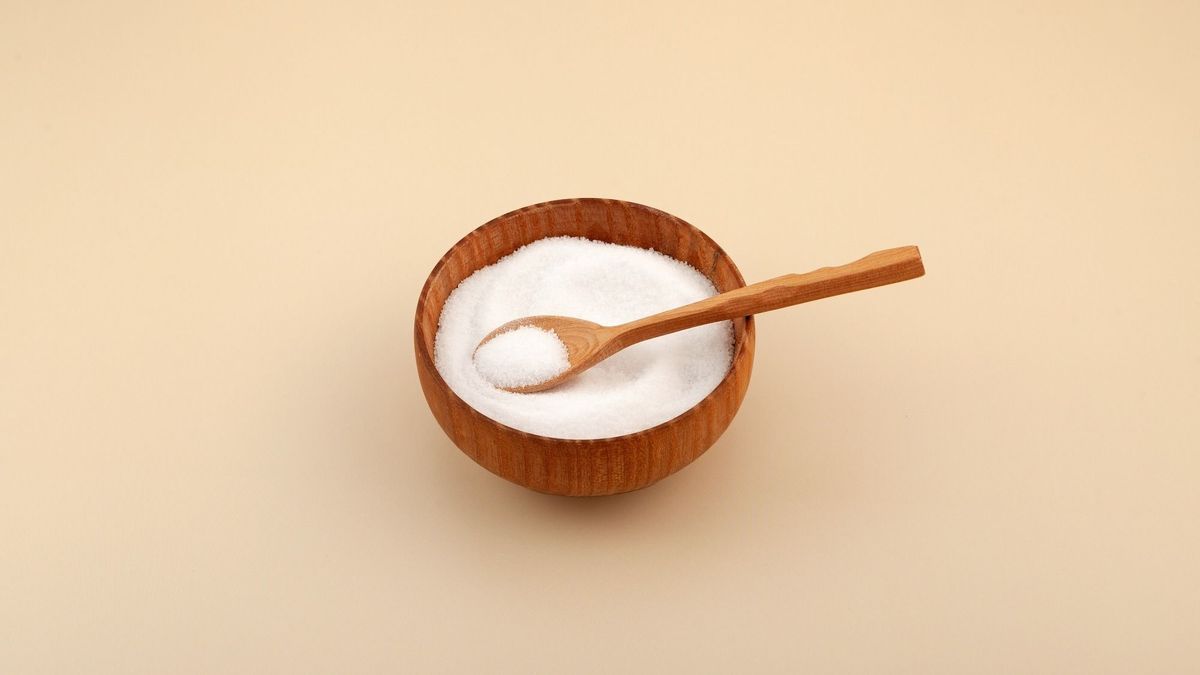
Regularly used in low-fat products, maltitol is a sweetener. What is maltitol? Where to find this sweetener? What are the health effects of this sugar substitute? What are the different uses of this product? We take stock.
Maltitol is a product obtained industrially, extracted from wheat or corn starch. It is a sweetener from the polyol family, like sorbitol, mannitol and xylitol. “It is called “mass” or “charge”: an expression which means that it has the same sweetening power as sugar and that, to obtain the sweet flavor, it will be necessary to use the same quantity.explains Florence Foucaut, dietitian-nutritionist. In other words, 100 g of maltitol is equivalent to 100 g of sucrose“. This sweetener comes in the form of a fine, white powder, very similar to sugar. At home, it is used to add a sweet taste to our food and, in products prepared by the food industry, maltitol is mainly added to foods labeled “low sugar” or “sugar free”.
In what foods can you find maltitol?
As this sweetener is very low in calories (2.4 Kcal/g), maltitol is an ingredient of choice in foods labeled “no added sugar” and “low sugar”. It’s about :
- Dairy products (yogurt, cottage cheese, ice cream, cream desserts, etc.);
- Biscuits ;
- Sugar-free chewing gum;
- Candy ;
- Light chocolate;
- Pastries ;
- Medication.
Maltitol also exists in powder form intended to be added to your foods to give them a sweet taste such as your yogurts, your hot drinks or even your home baking recipes. “On the other hand, it is not used in drinks because the quantity that would have to be used to obtain a sufficient sweet effect would cause intestinal problems.specifies Florence Foucaut.
How do you know if there is maltitol in food?
You just need to read the composition of the product: among the ingredients, its presence is indicated under the name “maltitol” or the code name “E965”.
What are the health benefits of maltitol?
This sweetener has serious benefits for our fitness and our health.
Maltitol has a very low Glycemic Index
The Glycemic Index is an index that measures the ability of a food product to raise blood sugar levels. The lower the GI the food has, the less likely it is to raise blood sugar levels. Like all sweeteners, maltitol has a very low GI which allows it to slow down the absorption of sugars in the body. In other words, its consumption does not raise blood sugar levels very much. It can therefore be a good substitute for sugar for people with diabetes who can enjoy the sweet taste without fearing that its consumption will cause an insulin spike.
Maltitol is low in calories
If you are watching your figure closely, this sweetener is your ally: it provides 40% fewer calories than white sugar, or 240 kcal per 100 g compared to 400 kcal for sucrose. One tablespoon, or 10 g, provides 24 Kcal. It is therefore not the one that risks increasing the calorie addition of your meals or your hot mid-day drink, while providing you with the sweet taste you are looking for. Finally, thanks to its low GI, it does not cause reactive hypoglycemia during digestion, causing food cravings.
Maltitol is good for teeth
Although it tastes like sugar, it does not, however, have its aggressive effect on the teeth: this sweetener has the advantage of not being assimilated by dental plaque bacteria and contributes to maintaining mineralization. teeth. An asset for avoiding oral and dental conditions and keeping cavities at bay.
What are the uses of maltitol?
This sweetener can be used both cold and hot. When cold, it sweetens your dairy products and hot drinks, in which it dilutes perfectly. When hot, it is used in the composition of your pastries, pastries, crested and waffle batters, your muffins…. The quantity to add is the same as that of the sugar.
Is maltitol suitable for all diets?
Yes, this sweetener is compatible with vegan, vegan, vegetarian, halal and kosher diets.
Is maltitol dangerous for your health?
Consumption of this sweetener is not considered dangerous, which is why there is no Acceptable Daily Intake. However, EFSA (European Food Safety Authority) is currently reassessing the safety of Maltitol and all polyols. “Also be careful if you have sensitive intestines because its consumption in excess (more than 30 g/day) can lead to digestive disorders such as abdominal pain, bloating, gas production and episodes of diarrhea for the most sensitive.”, warns the dietitian. “Thus, food products containing more than 10% maltitol must bear the words “excessive consumption may have laxative effects”.
Are there any precautions to take before consuming maltitol?
As a precaution, its consumption is not recommended for pregnant and breastfeeding women, nor for children.
Where to get maltitol?
Maltitol is available in large and medium-sized supermarkets in the “sugar” or “dietary” section. It is also available in organic stores.

